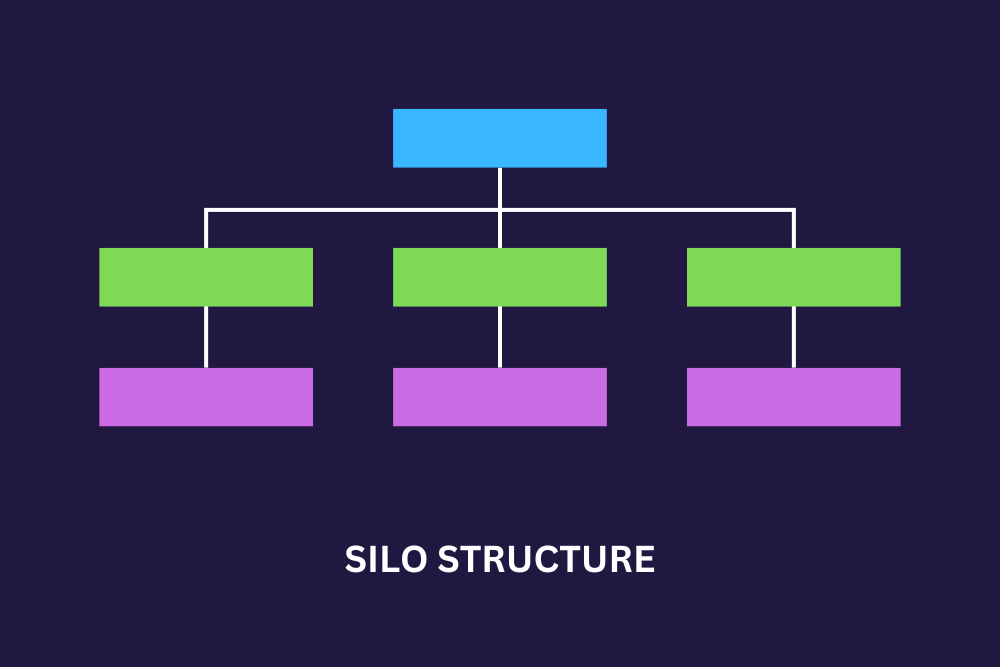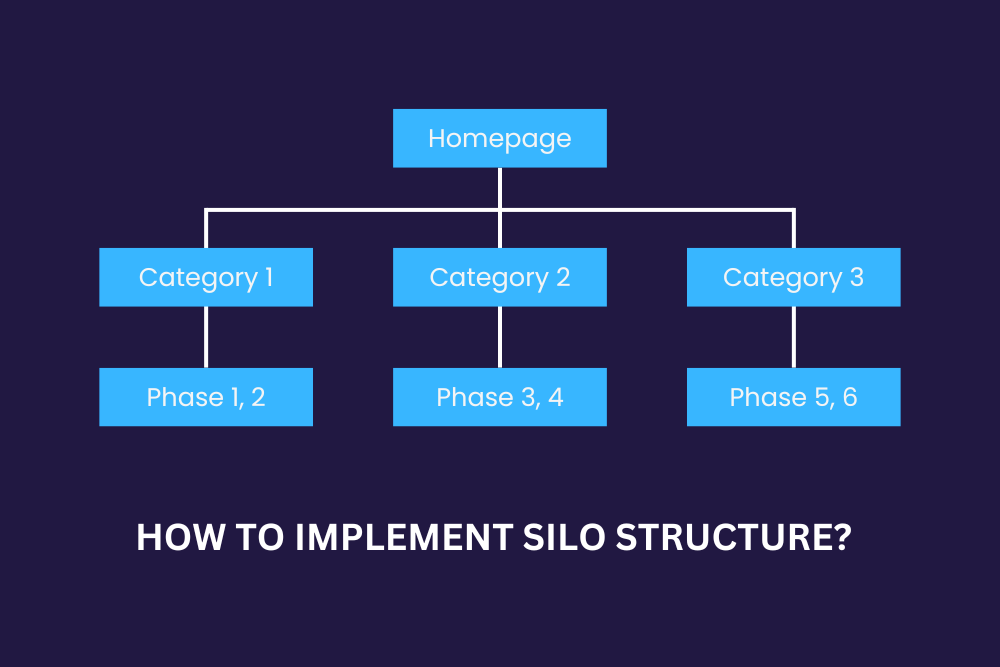In the world of SEO, silo structure is key. When your website is properly siloed, it becomes easier for search engines to understand your content and rank it accordingly. In this article, we will discuss what silo structure is, why it is important, and how you can implement it on your own website. So, without further ado, let us get started!
What is a Silo Structure?
If you are involved in SEO, you may have heard of the term “silo structure.” But what exactly is a silo structure? And how can it benefit your SEO efforts? In short, a silo structure is a way of organising your website so that each page focuses on a specific keyword or topic. By creating a silo structure, you can ensure that each page on your site is laser-focused on a particular keyword, which can help to improve your search engine rankings.
Additionally, a well-organised website is easier for both search engines and users to navigate, which can lead to more traffic and conversions. So if you are looking to optimise your website to achieve better performance, implementing a silo structure is a great place to start.
Importance of Silo Structure
Silo structures are important for websites to rank higher in search engine results pages (SERP). A well-structured website will have a clear hierarchy, with the most valued pages at the top of the hierarchy and supporting pages below. This structure is known as a silo, and it allows search engine crawlers to easily index the website and understand its content.
In addition, siloed websites are often seen as more credible and trustworthy by search engines, as they signal that the website’s owner is knowledgeable about best practices of Search Engine Optimisation. As a result, websites with silo structures typically see higher SERP rankings than those without. While there is no guarantee that implementing a silo structure will dramatically improve your website’s SEO, it is certainly worth considering if you are looking for ways to increase your SERP visibility.
How to Implement Silo Structure?
You can implement a silo structure on your website in different ways. One way is to use subdirectories. Similarly, another way is to use categories and tags. If you are using WordPress, we recommend using the Yoast SEO plugin. This plugin will help you to silo your website’s content properly.
However, if you are not using WordPress, you can still silo your website’s content using subdirectories. For example, if you have a blog about SEO, you can create a subdirectory for each topic. You could have a /blog/SEO/ directory for your SEO articles and a /blog/social-media/ directory for your social media articles. Moreover, you can also use categories and tags to silo your content.
What does Google recommend to implement a Silo Structure?
Google is one of the most powerful and advanced search engines and contains everything it needs to analyse your website and index it accordingly. Google decides where your website would be ranked, but there are multiple things you can do to make Google realise that your website deserves to be in higher rankings of Search Engine Result Pages (SERPs).
A poorly structured, improperly organised, and badly themed website would get you nowhere. All these flaws will make it difficult for Google to crawl through your website and index it. If the search engine doesn’t get a hold of what the website is about, then there is no point. A website’s theme, categories, and pages need to be clear and distinct so that Google can understand what the website is about.
Themes play a vital role in making the first impression of your website, so it is important to choose your website’s theme wisely. Similarly, categories help distinguish one piece of information from the other. This information could be relevant yet might perform or function at different levels, and categories can help build this distinction.
Moreover, when it comes to publishing content, the use of keywords and long-tail keywords is just as important as anything else. Using the long-tail keywords in the correct context and updating them frequently can really help your website’s silo structure.
Silo Structures Boosts Website SEO
There are a few different ways that silo structures can boost your website’s SEO.
Improved User Experience
When your website’s content is properly siloed, it will be easier for users to find the information they came for. This will improve the user experience on your website, which will lead to more engaged users. If a user enjoys his time on your website, he is likely to come back again and offer you more business.
Keyword Relevancy and Context
A siloed website makes sure that search engines can easily understand the context of your pages. This will create keyword relevancy and contextual signals that will help your pages rank higher in search results.
Targeting Long-Tail Keywords
If you are targeting long-tail keywords, silo structures can be incredibly helpful. This is because they can help you create content that is highly relevant to the keyword you are targeting. This increases the likelihood of a better ranking for that keyword.
Ease of Interlinking
When you implement a silo structure to your website, it makes it easier to interlink your pages. This is because you will know which pages are related to each other. Interlinking your pages will help improve the SEO of your website. Moreover, it will also help users access the pages that they want more easily. The most important page to link web pages from is the homepage of your website. However, that doesn’t mean that it should be linked to every page on the website. You should only link it to your most valued pages that are likely to attract more traffic.
No Overlooked Content
A website that applies a silo structure has a lesser chance of content that goes overlooked. This is because you will have a clear structure for your website. This will help you make sure that all of your content is properly indexed and ranked by search engines.
Improved Crawlability
Implementing a silo structure to your website makes it easier for search engine crawlers to crawl your website. This is because your website will have a clear and easy-to-understand structure. This will help improve the SEO of your website.
Better Chance of Ranking in Google’s Featured Snippet
If you are aiming to rank in Google’s featured snippet, silo structures can be helpful. This is because they can help you create content that is highly relevant to the keyword you are targeting. This improves your chances of being featured in the snippet.
As you can see, implementing a silo structure on your website has quite a lot of benefits. If your aim is to improve your website’s SEO, we recommend that you start using silo structures.
What is the difference between Soft Silo and Hard Silo?
The difference between soft silos and hard silos is that a soft silo structure is built through interlinking web pages, whereas the hard silo structure is created by using your website’s structure and directory structure. Hard silos are also known as physical silos and can cater to users better than soft silos in case of topics that concern multiple fields.
FAQs:
How do you build silo SEO?
You can begin by keyword research for a specific topic. After you are done with your keyword research, you can start distributing the topic into sub-pages or supporting pages. Furthermore, you can also break the sub-pages and their topic further into long-tail keywords.
What is the difference between categories and tags?
The main difference between categories and tags is that categories are used to group similar pieces of content, while tags are used to describe individual pieces of content.
What are silos used for?
Silos are used for a variety of purposes. They can be used to improve the user experience, create keyword relevancy and context, target long-tail keywords, interlink your pages, and improve the SEO of your website.
Do silos help SEO?
Silos can help improve the SEO of your website in a number of ways. They can help create keyword relevancy and context, target long-tail keywords, interlink your pages, and allow search engines to easily crawl and index your website.
How relevant should pages be for interlinking?
For interlinking new websites, web pages need to be highly relevant. However, in the case of old or well-established websites, relevance doesn’t have to be very high. The reason behind high relevance in new websites is that new websites are still building their topical relevance. Moreover, when a website is in its early stages, less relevant internal links can make it hard for Google to understand the website and its web pages.
Conclusion
A website with a silo structure implemented to it can make a difference to its Search Engine Optimisation and its ranking on Search Engine Result Pages (SERPs). Implementing a silo structure can be nothing short of a challenge, but if done right, it can make your website much better in many ways. A higher ranking on SERPs is essential for traffic, which is what silo structure can help you achieve.




